The final leg of our journey started with a five-and-a-half-hour drive—from Beverley in Northumberland to Amberley, near Arundel, to attend the Goodwood Revival. As described on their website, the Revival is The only historic motor race meeting to be staged entirely in a period theme. Goodwood Revival is an immersive celebration of iconic cars and fashion.
For us, vintage racing is the main attraction; the newest car on the track is from 1966!
But entertainment and fashion are aplenty., from singers to mechanics to participants.
Attending the three-day event requires a lot of advanced planning for the organizers, participants and even us lowly attendees. Not only is getting accommodation tricky, but suitable vintage clothing must be tracked down, fitted and lugged to the event.
Teddy and Gustus favour flying jackets and helmets for their racing attire.
Driving at the event is by invitation only and is enormously popular among former and current Formula 1 drivers. I suspect that driving classic vintage cars is an exciting and challenging change from the up-to-the-minute F1 cars of today. My favourite driver is David Coulthard, who drives a rare vintage gull-wing Mercedes.
It was a good day for him—he won!
He is featured on the following year’s Goodwood Member’s Meeting brochure.
Glenn is a member at Goodwood and can thus procure tickets relatively easily. Where to stay is another matter; reservations are booked well in advance, and people tend to rebook for the next year on the spot. Competition is fierce! The previous year, I had been lucky enough to pounce on a new listing from Boutique Retreats for the sister spring event, the Goodwood Members’ meeting, and booked it again for the autumn Revival. The location was perfect. We had invited a couple to join us, and the tiny hobbit cottage fit the four of us very snugly.
Photographers worldwide flock to Bibury, a chocolate box village most famous for the cottages on Arlington Row.
Constructed in 1380 as a monastic wool store, the buildings were converted to a row of weavers’ cottages in the late 17th century.

Arlington Row is located on the aptly named Awkward Hill. Not only is it one of the most photographed Cotswold scenes, but it is also shown on the inside cover of all United Kingdom passports as an architectural conservation area. Now owned by the National Trust, Arlington Row has been featured in several films, including Bridget Jones’s Diary.
At the bottom of Awkward Hill flows the river Coin, where many varieties of trout enjoy its crystal clear waters.
We dined at the restaurant in the nearby Swan Hotel. The food was excellent, and the service was friendly and prompt.
The Swan is a popular venue for tour groups eager to explore the beautiful Cotswolds. Happily, the tour buses had departed by the time we arrived.
After our meal, we enjoyed the short walk back up the hill to our accommodation.
The following day, we set off for Gloucester Cathedral, whose Tribune Gallery opened after our last visit.
Located high above the main body of the Cathedral and accessed by 38 spiral steps.
From this giddy height is a fabulous view down into the nave of the Cathedral.
You can also get up close and personal with the Great East Window, whose intricate craftsmanship has been here for over six centuries. Mindboggling.
We also discovered a fun figure in one of the stained glass windows. Doesn’t this fellow look like a golfer?
As golf wasn’t invented until the early 18th century, it’s likely someone playing cambuc or “bandy ball” with a leather ball filled with feathers.
Also accessible from the Tribune Gallery is the Whispering Gallery. The name gives it away—its construction enables a whisper to be heard from the opposite side of where you are standing.
Back down on terra firma, I was delighted to revisit Gloucester’s finest feature, the cloisters with exquisite fan vaulting.
From the 1090s until the dissolution in the 1540s, the monks worked and studied in the cloisters built into the perimeters of the quadrangle.
Fan vaulting was added between the 1350s and 1390 in the new English Perpendicular Gothic architectural style when the panels that had already covered the walls and windows were extended up to the ceiling to meet each other overhead.
It’s so named due to the hollow fans joined with decorative tracery.
If this capsule comment has piqued your interest, there is a full write-up of Gloucester Cathedral and the rest of the 42 Anglican Cathedrals in Cathedral Stories and the Cathedral Timeline.
Our next outing was Kelmscott Manor Manor, William Morris’ country house. Founder of the Arts and Crafts movement (styled as “Craftsman” in America), William Morris is famous for his maxim “Have nothing in your house that you do not know to be useful, or believe to be beautiful.”
Morris wanted a place outside London where his family could enjoy the fresh air. Kelmscott Manor provided him with much inspiration for his famous textile patterns. You might recognize this as a precursor to Strawberry Thief.
Spode’s interpretation is a favourite china pattern of mine.
The bucolic atmosphere at Kelmscott gave Morris the ability to think deeply about society, ecology and building conservation,
Inside the house are many of his famous textile patterns and a lot of the family’s furniture.
The manor boasts three floors; the top is a loft with intriguing possibilities. Wouldn’t you have loved to play up here as a child?
Returning to Bibury from Kelmscott, we spotted the quintessential English cottage garden.
Glenn obligingly pulled over, and I got out to snap some pictures. Tucked among the profusion of flowers were squash, cabbages and even corn!
The dahlias were spectacular.
Nasturtium spilt over the stone wall onto the sidewalk in a profusion of colour.
That’s what we love so much about the UK—an adventure around every corner. You never know what you’re going to find!
That concludes Week Three of our latest adventure. I’m sorry it’s taken so long to write up the last leg of the journey. You can find the previous blogs here: Week #1—London to Derbyshire and Week #2— Derbyshire to Northumberland.
We have been up to our ears in the kitchen and laundry room renovation at the Cape, but we are in the home stretch. The countertops are being delivered tomorrow, so we will soon have a kitchen sink and a range. Alleluia!

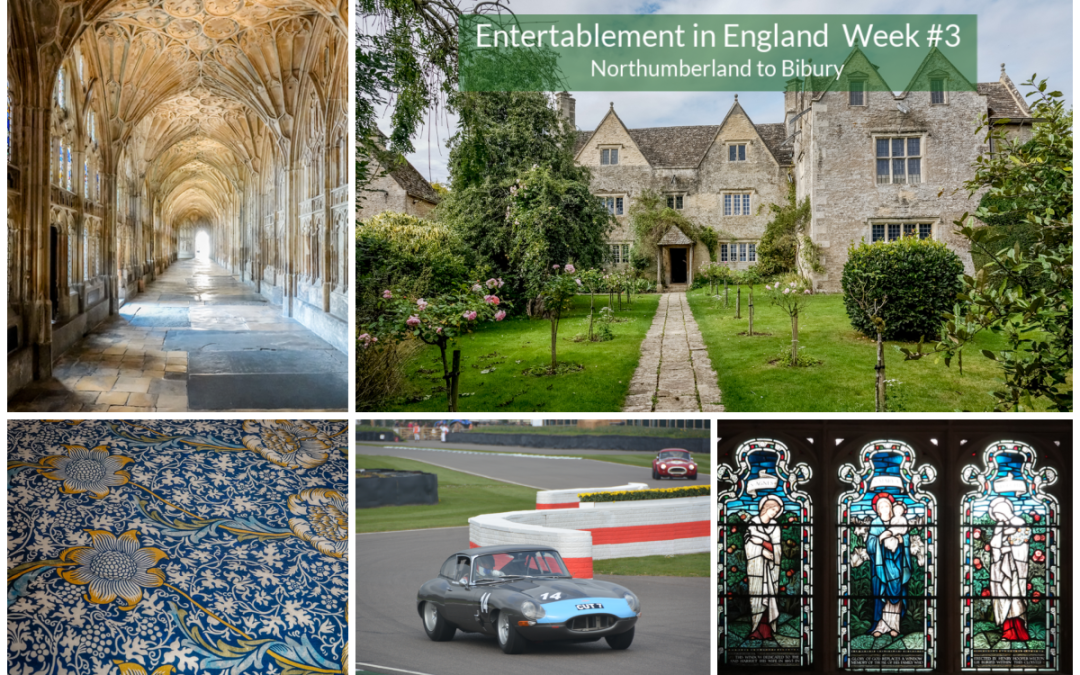







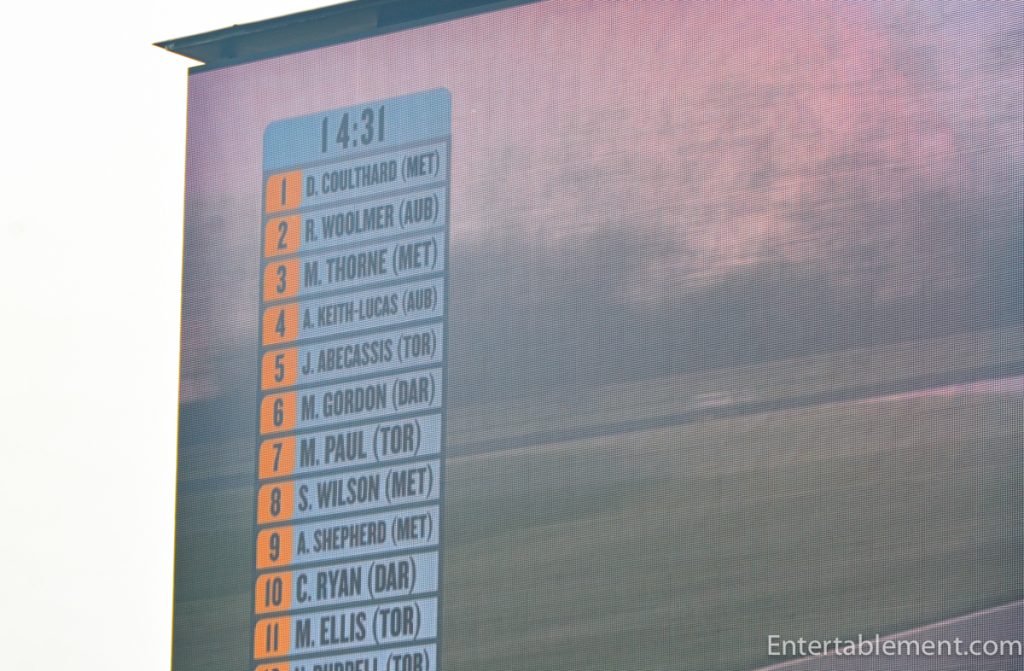
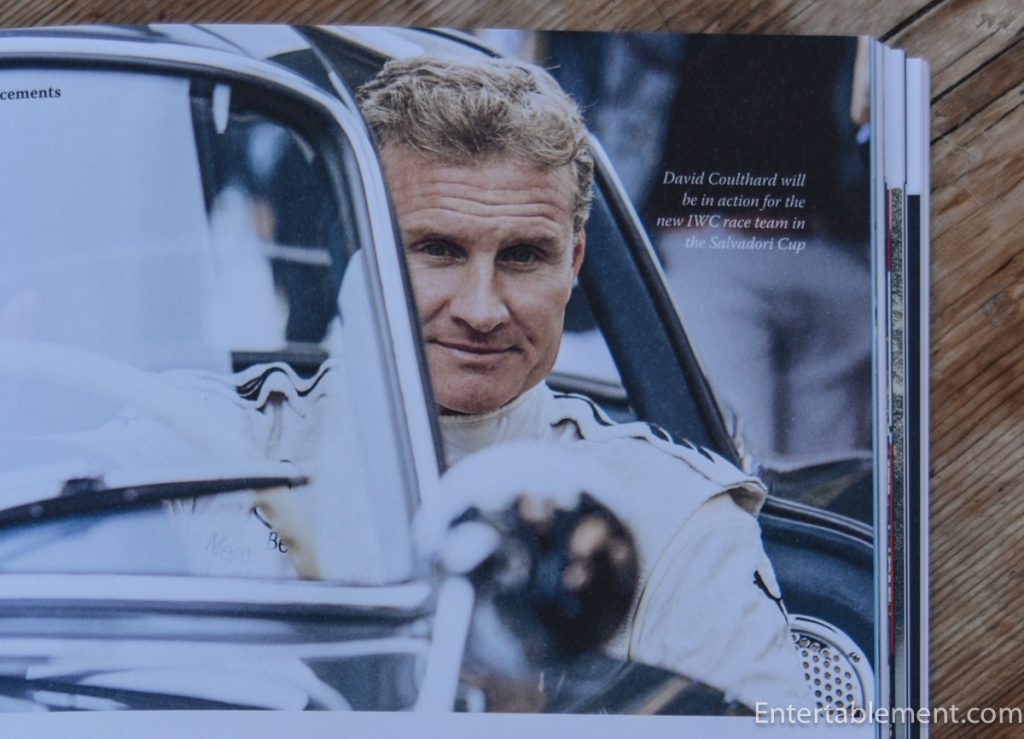


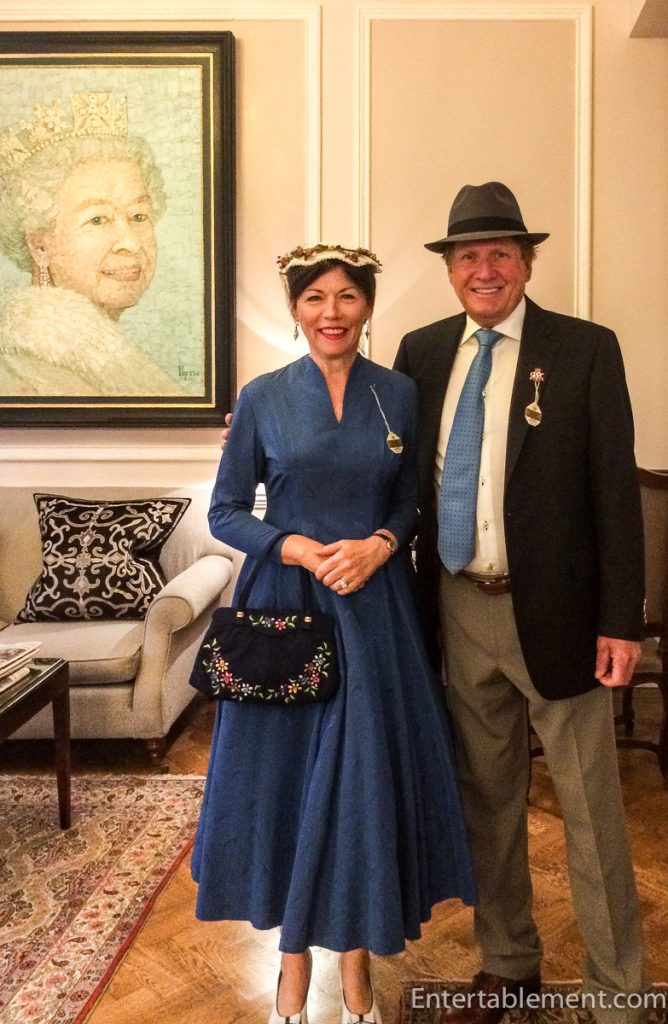



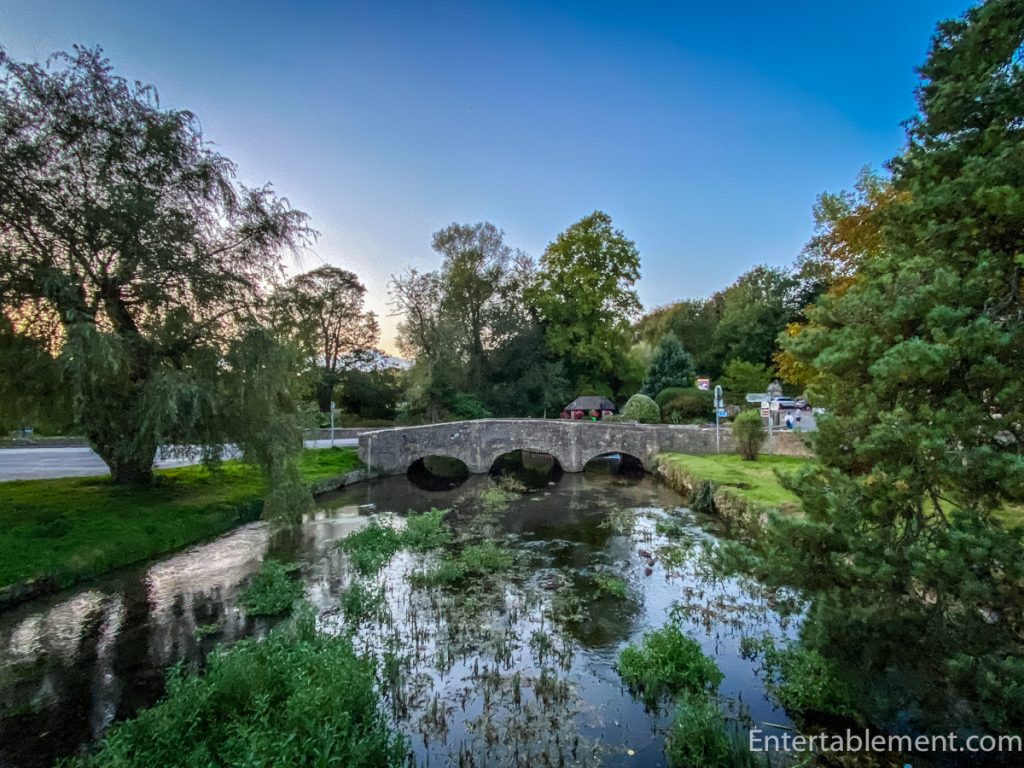
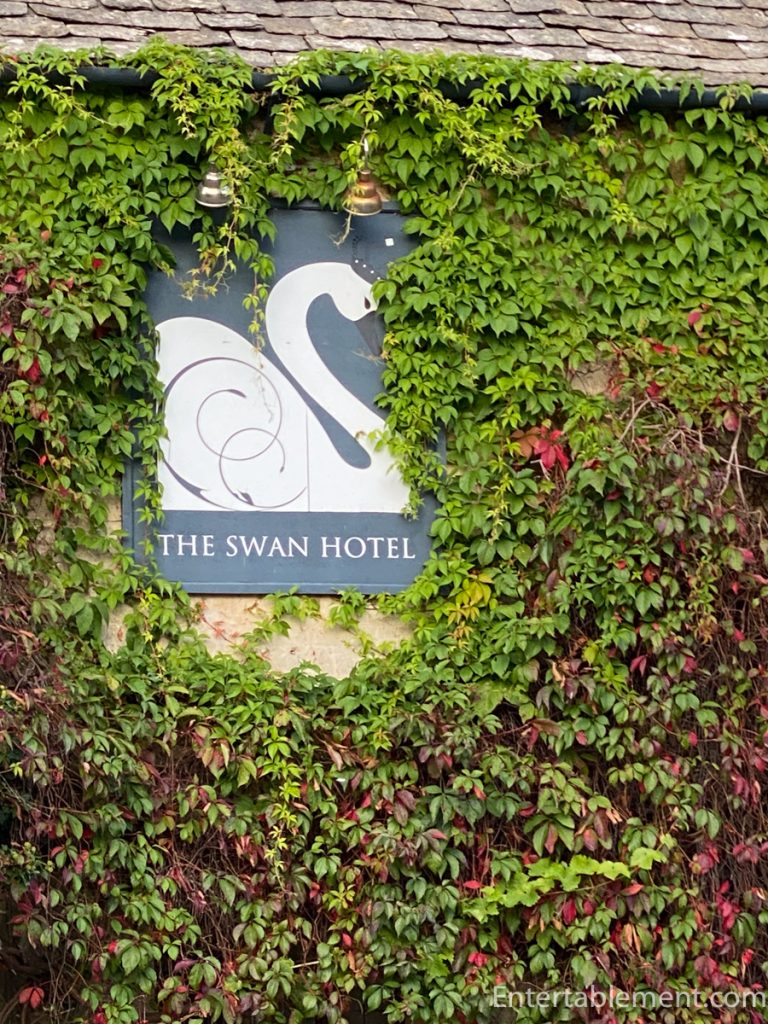


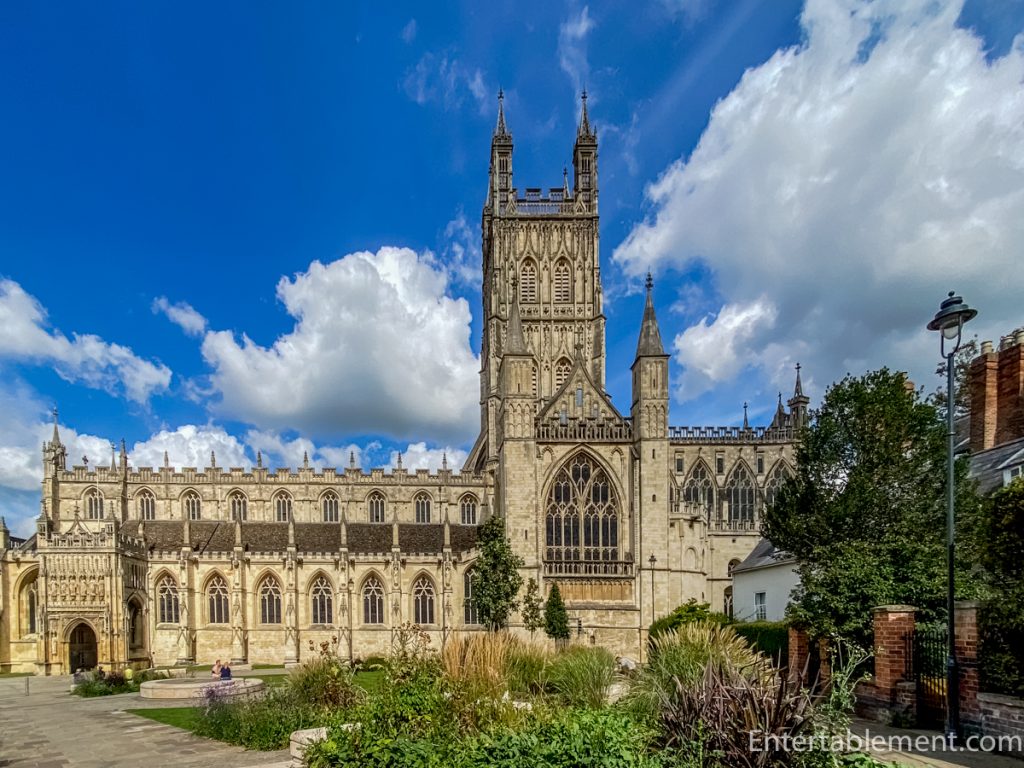



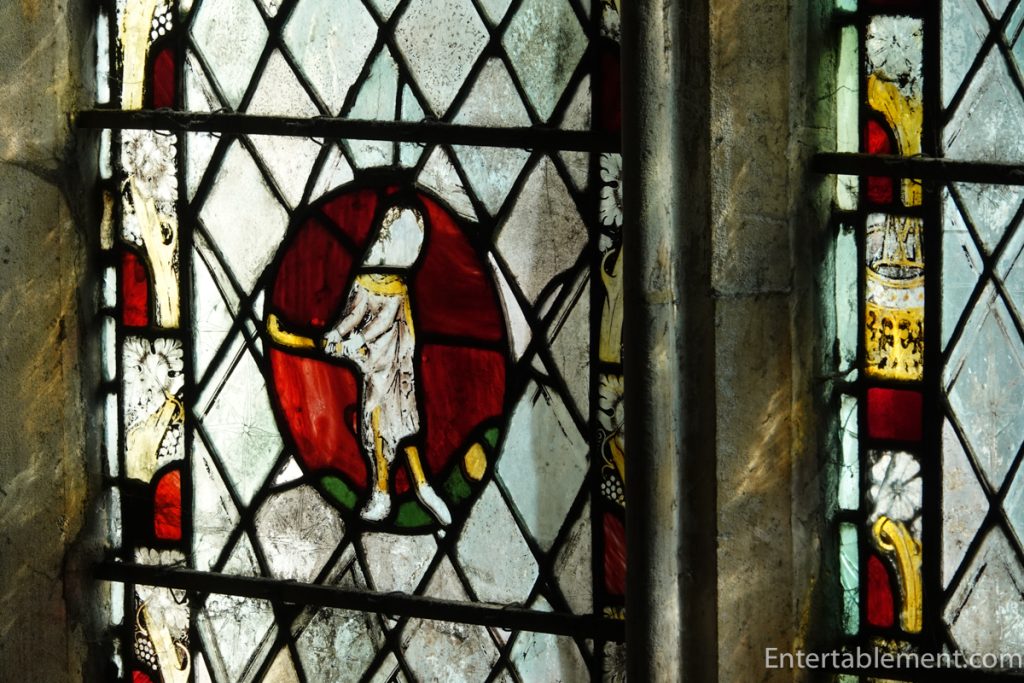


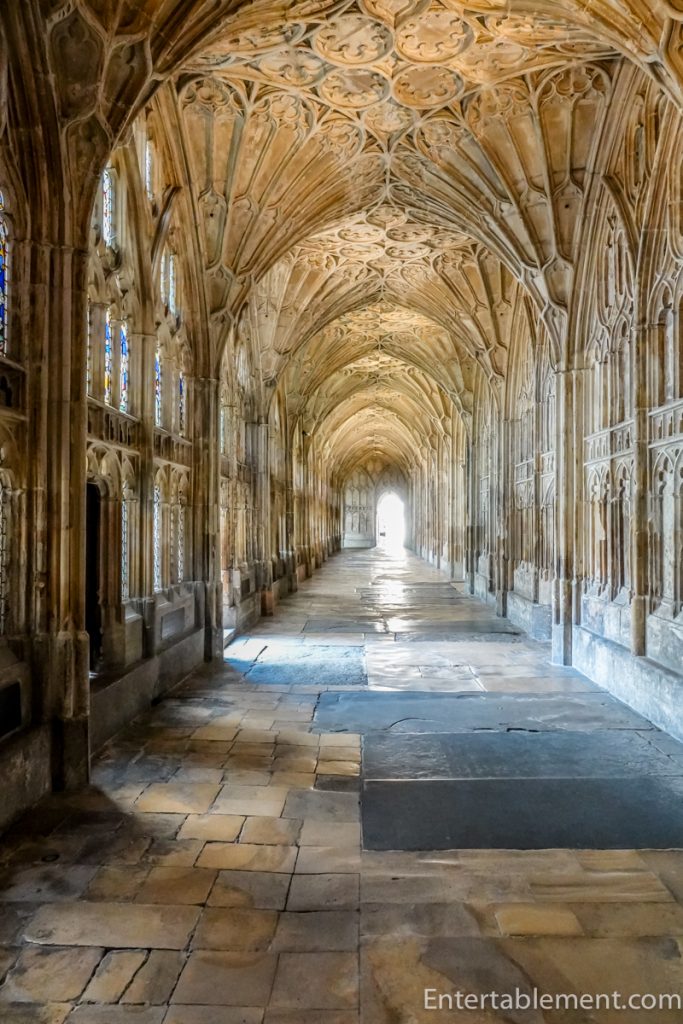




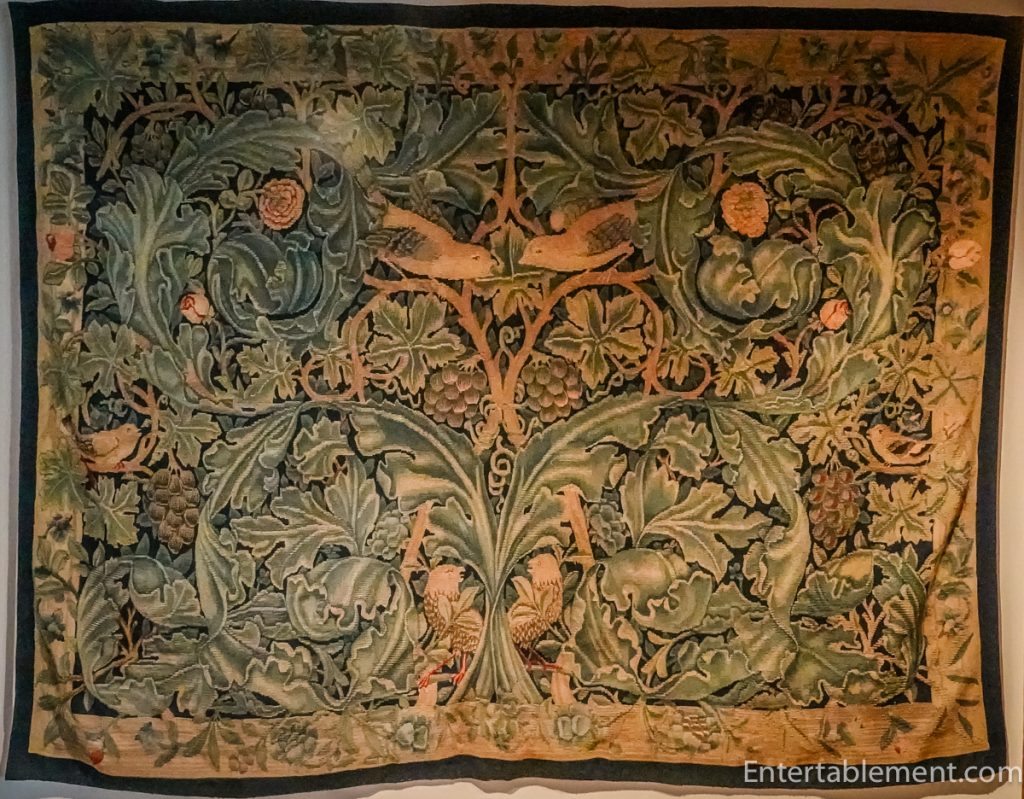
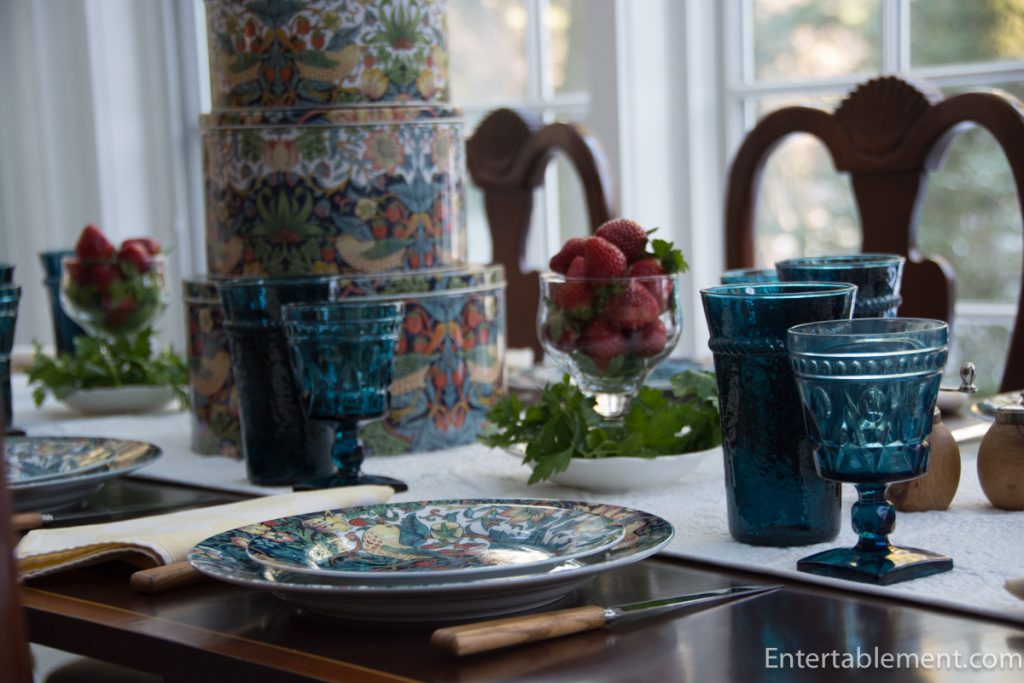


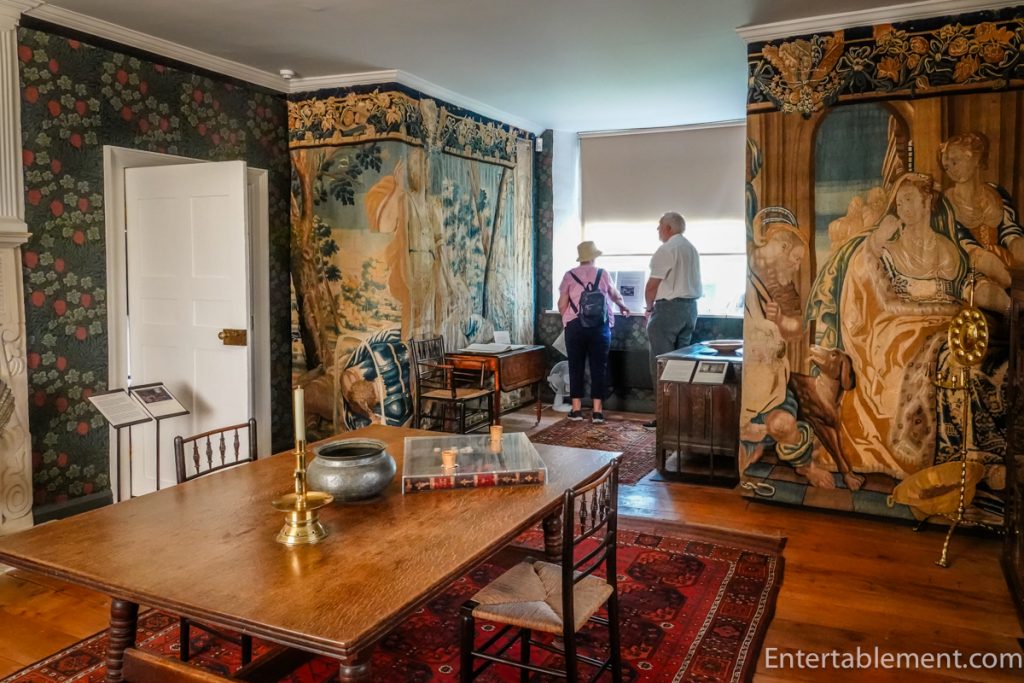
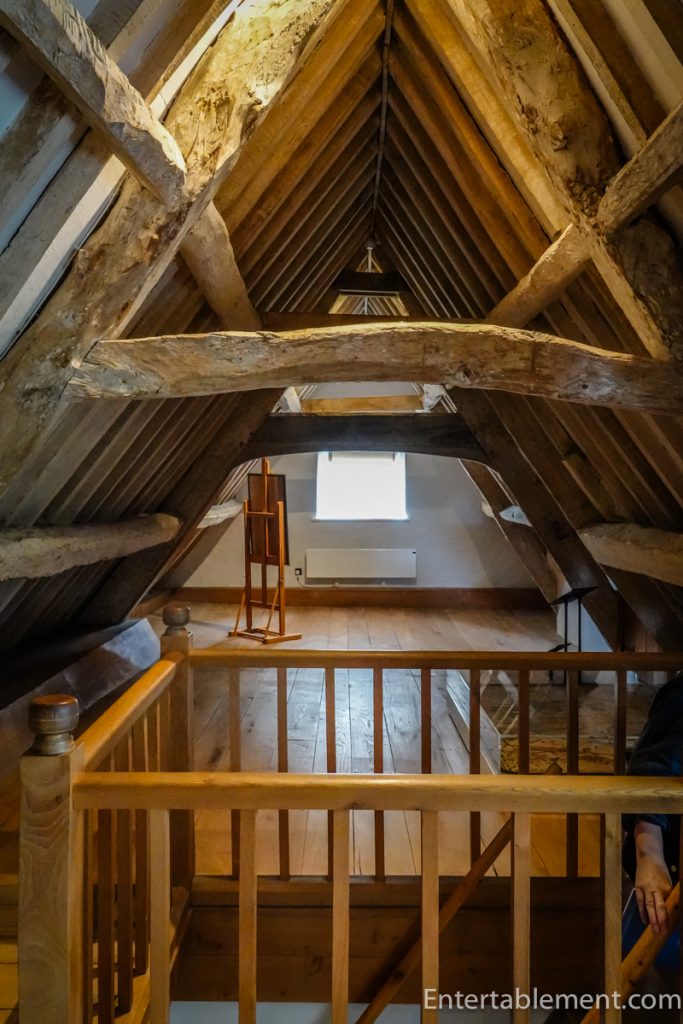

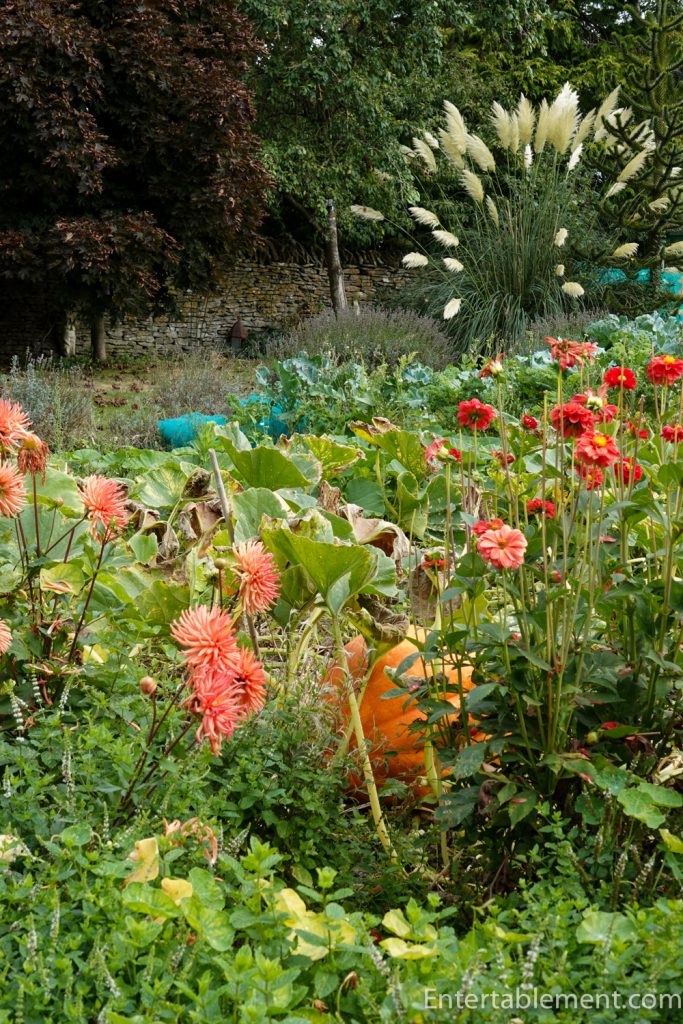
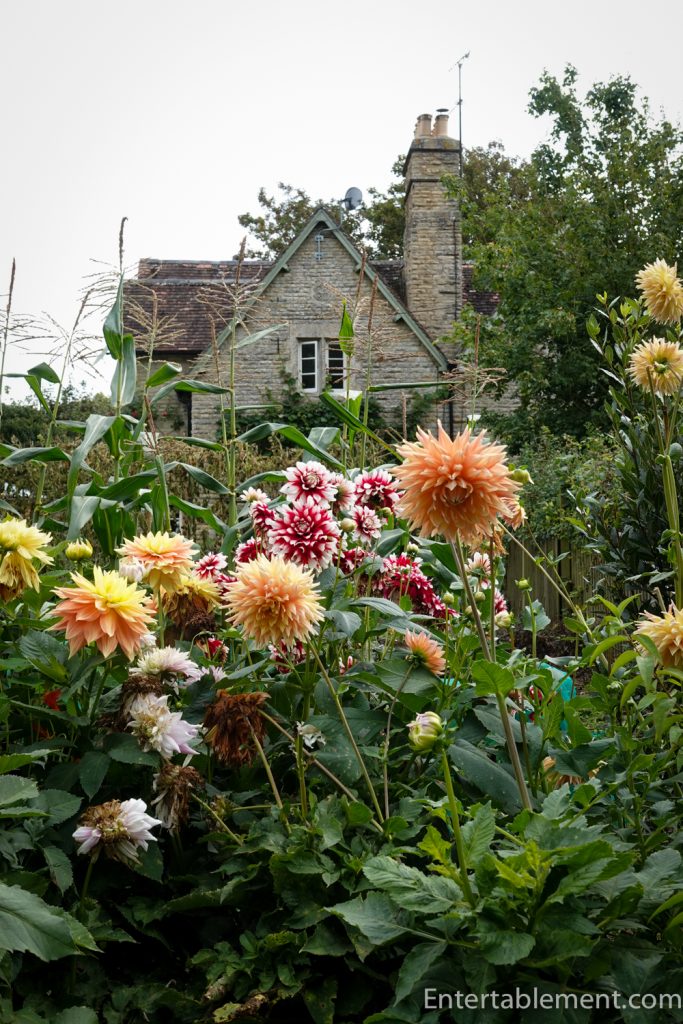




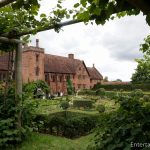


Helen: the picture of you in the black dress, wrap and fascinator is absolutely gorgeous! You are so beautiful. And the one of you in the stands as well. You look positively radiant. I love the quaint cottages you stayed in. And the garden!! No wonder you love England so much.
Patti, you are too kind.
We do love England for all the reasons you mention. There is no end to fun, quirky accommodation and places to see!
Hope you had a wonderful time in Costa Rica.
Dear Helen, you always provoke such memories with these posts! Walking the chocolate-box Cotswold villages summer of 1972; visiting the A&C sites galore in Glasgow, with Rennie Mackintosh and Morris all around me in that (pre-’70s cleaning) gritty city when the Gorbals still existed; flying in to the Revival by heli and driving the country roads in vintage BMWs. And Coulthard…swoon. Glad you have time to sort through all these wonderful pictures for us. Thanks so much.
Those were the days, Beatrice!
I remember being in London in 1976, during those same gritty, pre-cleaning days. It was during the big heat wave and having worn sandals, I ended up washing my filthy feet, black with coal dust, in the ladies room of a restaurant before sitting down to dine! It’s so very different now.